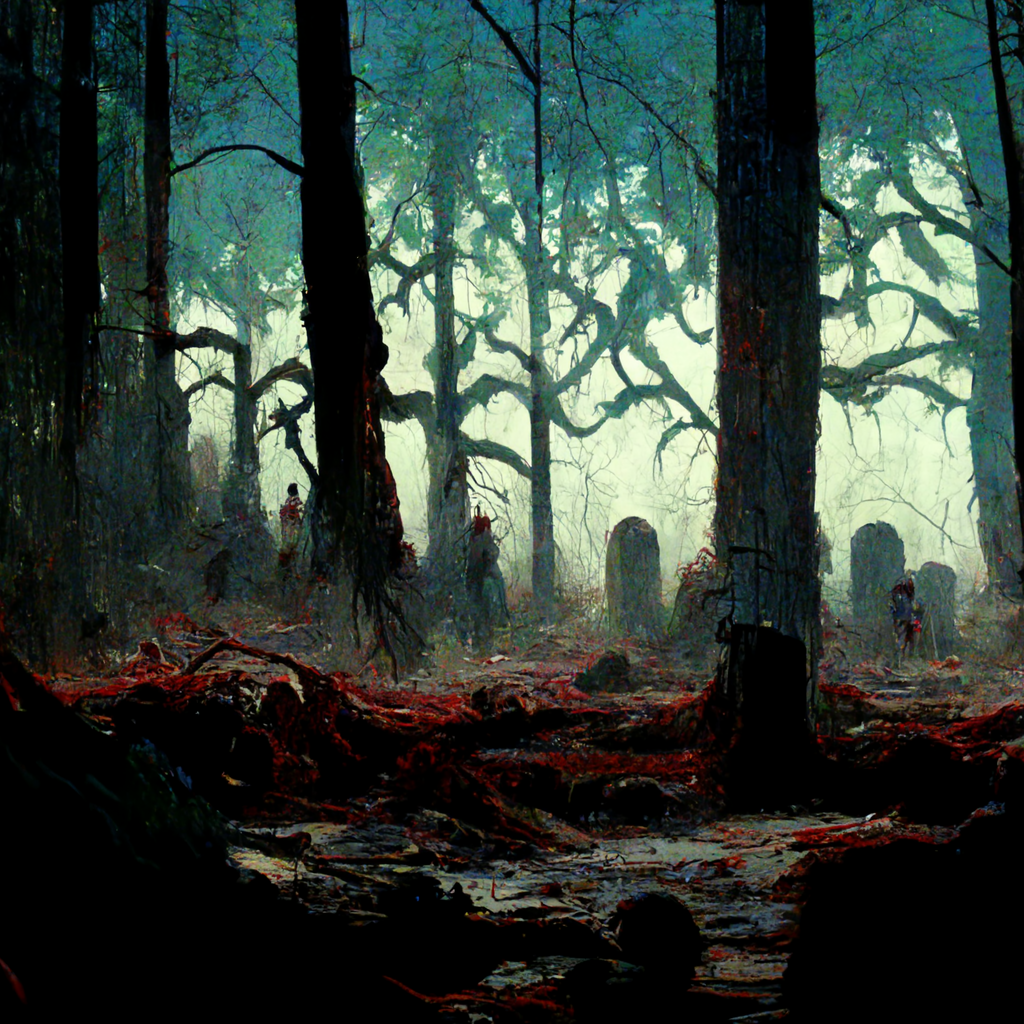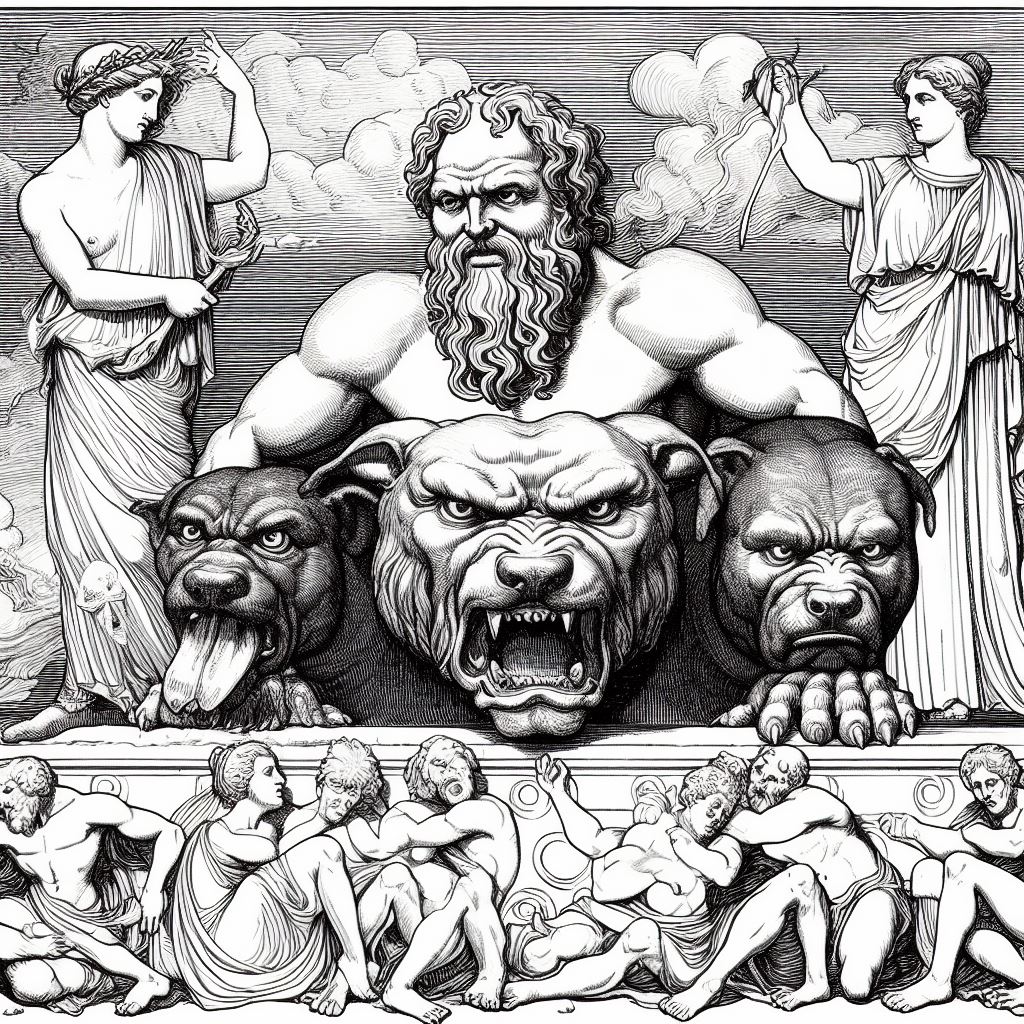The real oOrigin of Heaven and Hell in the Afterlife
“My generosity is as infinite as the sea,
My love, just as deep. The more I give you,
The more I have, for both are infinite.”
– Romeo and Juliet, Act 2, Scene 2, Lines 140–142
B Throughout history, many religions have predicted that the destiny of humanity is either heaven or hell as a final reward or punishment. However, the true origins of these realms remain shrouded in mystery.
This exploration challenges traditional beliefs by approaching the afterlife from a scientific perspective, based on the physics of energy transfer. If consciousness continues beyond death, how is it sustained?
In the following lines, I will reveal the relationship between thermodynamics, information theory, and the spiritual world, and explain why it was not heaven, but hell, that existed first, and how the famous battle between them began.
In the theory that the spiritual world — the existence in the afterlife — is a universe of information where all things and beings are made of pure information, this universe has no sources of energy. There are no stars radiating heat, nor is there movement as we understand it. In the spiritual world, spatial dimensions have no meaning. When one wishes to be in a specific place, simply thinking about it is enough for the consciousness to transfer there. Therefore, in that universe, there is no kinetic energy either.
I have already stated in previous posts that a universe made of pure information, not based on matter, is a very plausible concept in modern physics. There are many competing theories trying to explain the nature of our universe, which, in essence, suggest this same idea.
From John Wheeler's "it from bit" theory, which states that everything exists because conscious beings observe it, to Melvin Vopson's theory, which proposes that information is a distinct form of matter, where bits have weight, and even the widely known theory suggesting that the universe is a holographic projection, all these theories propose that matter is, in essence, nothing more than information.
Under these theories, thinking, perceiving, or simply having a nervous system is equivalent to storing and creating what, ultimately, the universe is made of.
However, all forms of information we currently know are encoded in some form of matter. What I propose is that the spiritual world represents an information universe that is not encoded in any kind of matter, unless it is the entire existing universe, and does not occupy space unless it exists throughout space simultaneously.
The accounts of near-death experiencers (NDEs) suggest the possibility that the spiritual world is not encoded in space because, for them, movement is not linked to spatial dimensions. For a spirit, the mere desire to be somewhere transfers the consciousness there effortlessly. If this information is not encoded in space, it cannot be encoded in matter either, since matter only exists within space.
The spiritual world must need energy for beings to think and communicate
There is still effort related to thinking, transferring information to other spiritual beings, or receiving information from them. And effort always requires energy.
There must be at least one source of energy in the spiritual world for souls to exist in a state other than eternal freezing or slow decay.
Many who have died and returned after visiting the intermediate realm speak of an intense light that did not burn when looked at and of an immense love emanating from it. Some called that light God, while many avoided using that word, considering its meaning too poor to describe the true nature of that light.
Light is certainly a good candidate as a source of spiritual energy, but how is energy transferred in an information-based universe?

Let us keep love in mind, as it is something that all those who have found the Light have felt in overwhelming amounts and with a sublime quality. Likewise, let us consider the accounts of those who have visited infernal realms. They report feeling intense hatred and fear.
Infernal NDEs are unanimous in this aspect. Those who visited these realms were tormented by horrible beings, both in appearance and actions, that expressed deep hatred toward them. These entities would tear them apart, devour them, burn them, and torture them, making it clear that escape was impossible. However, for those who returned, this turned out to be false. The key to escaping was invariably prayer.
If there is something that love and hatred have in common, beyond being the most intense emotions a human being can experience, it is their need to be shared.
A lover must have an object of love, and that love can only be reciprocated if the object is a sentient being. The same happens with hatred.
My theory is that love, hatred, and possibly fear are the main energy transmitters in the spiritual world.
The need for energy sources must have been immediately evident to the first conscious beings that formed the first human communities in the afterlife, and perhaps even before.
The Spiritual Realms in Ancient Human Religions
Ancient religions, up to about 500 years before Christ, painted a grim picture of what was commonly called the underworld. Whether the Mesopotamian Irkalla, the Jewish Sheol, the Hittite and Canaanite Mot, the Chinese Huangquan, or the Nordic Helheim, life after death was described as a gloomy and desolate realm where the spirits of the deceased resided.

These representations varied between cultures, but common themes included separation from the world of the living, lack of joy or suffering, and a universal fate for all, regardless of moral conduct during life.
These early realms shared another characteristic: most had a severe ruling class. Deities ruled them, demons or demigods imposed their will, and monstrous guardians prevented souls from escaping the underworld.
My theory is that these early afterlife realms naturally emerged when the souls of living beings found themselves in the immaterial dimensions of the spiritual world. The information that constituted their essence continued to exist in a world where the rules of the living had been translated into this new reality. There was no benevolent God nor spirits waiting for them since the beginning of the Universe, nor any kind of welcome, absolutely nothing. So the souls of the deceased recreated, as much as possible, the social structures they knew in life. However, in the spiritual realm, energy was scarce and was provided primarily, if not exclusively, by the souls of the newly deceased. The ruling class in that first afterlife would have been composed of those who knew how to extract energy from the incoming souls more efficiently.
But something, as I see it, must have changed everything. The cult of ancestors may have been devised by the ruling gods as a strategy to maintain a constant flow of energy from incoming souls. However, it ended up transforming that inescapable underworld, giving rise to the realms of heaven and hell.
If love is an energy transmission system, worshiping the ancestors must have prevented them from being completely drained into spiritual ashes by the rulers and their underworld minions. These ancient survivors must have received a constant flow of energy from their loving relatives, which allowed them toB stay in good condition. I can imagine that the gods and demons extracting energy did not want to completely drain these souls, ensuring that love flowed in both directions.
Those souls that persisted thanks to the love of their descendants would have been able to cooperate and form bonds of love among themselves. At some point in the first afterlife, entire spiritual communities must have escaped from those underworld prisons and created the first versions of heaven, Valhalla, Elysium for the venerated heroes, or even the possibility of a better reincarnation for morally superior individuals.
Or perhaps the most revered newcomers, true saints from the ancient world, supplanted the ancient gods in the power hierarchy, expelled the old gods and their demonic helpers, and began using the Cerberus spirits to ensure, like Saint Peter, that only the spirits of the chosen would enter the new paradise.
Surely, these new communities would have considered love the most important emotion in the entire universe.

Heaven and Hell: Divergent Realms
And here is where heaven and hell appear. Both realms would have continued to exist, and both would have needed to recruit souls to maintain their functioning. While hell would have been happy to capture all the souls of the dead, heaven would have had more difficulties integrating those more inclined to compete than to cooperate.
Competitive skills, so promoted in our modern world, can certainly enhance our material lives here, but are they beneficial in the afterlife? Can those teachings be applied in a realm where material possessions have no value? In a realm where sharing is much more important than possessing?
The main reason why someone might not enter heaven would not be simply because they are evil—a form of extreme egocentric competitiveness where one takes from others without worrying about their suffering—but because they cannot cooperate and, especially, because they are more inclined to dominate others than to treat them as equals.
The reason for the eventual prevalence of heaven, even if hell initially admitted many more souls, is twofold. First, the souls of good people would have left behind living relatives who would continue to love them after their departure from the material realm, ensuring a constant flow of energy, something that would rarely be available for those trapped in the infernal realms.
Second, the souls accepted into a heavenly realm could and would want to cooperate easily. Over time, they would have been able to study their new reality, devise unimaginable for us technologies, and eventually create or discover a source of energy that would grant unlimited power to those within that realm: the Light.